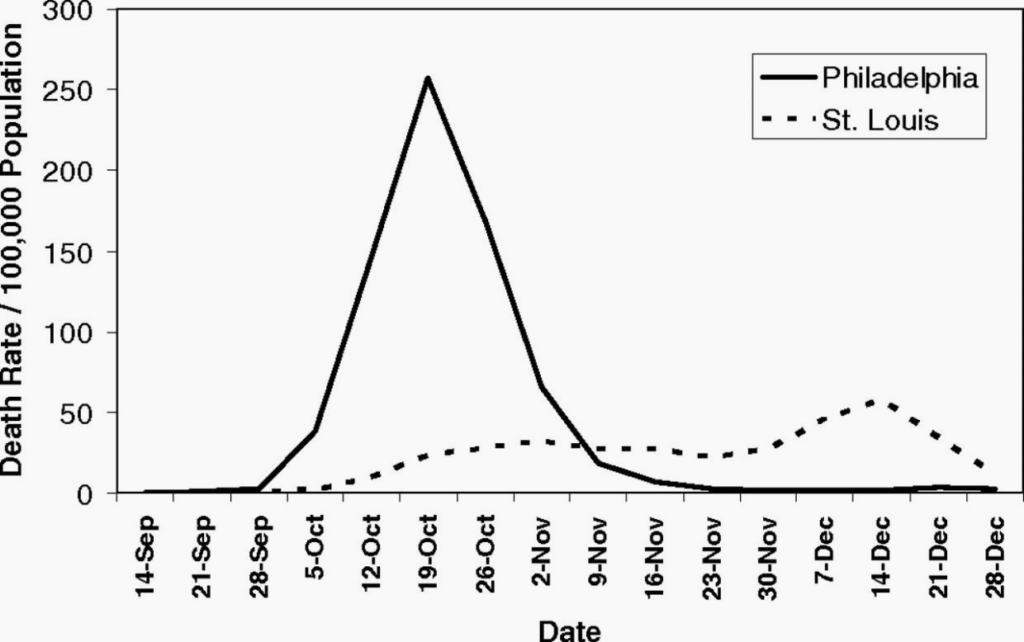
Attention! Ce contenu a été mis à jour il y a plus de 3 ans. Il pourrait contenir des liens qui ne fonctionnent plus. N'hésitez pas à nous écrire si vous en trouvez!

Main activity targets
Level(s):
Digital Competency Framework Components (QC):
Subject(s):
Adapted in English by Valérie Harnois
As part of a series of SCOOP! on COVID-19, today we address what history can teach us about ways to cope with a pandemic. COVID-19 has been quite active for a few months and leaves its mark all around the globe. Much like the Black Death (a type of plague), the Spanish flu, SARS, the avian flu, or even Ebola, COVID-19 will also make history in its own way. Unfortunately, these diseases are responsible for millions of deaths. They also allow society to make tremendous technological progress, medical advances, and foster human growth. Have we learned from the previous epidemics? Which lessons will we draw from this very exceptional situation which is undergoing at the moment? SCOOP! explains in this video.

In the past 100 years, the world witnessed many pandemics: the Spanish flu in 1918, the first cases of AIDS in 1981, SARS in 2002, the H1N1 flu (swine flu) in 2009 and COVID-19 which continues to wreak havoc and has been doing so for a few months. Until a vaccine is found, COVID-19 will not be under control. However, we can slow its progression by closely following the confinement measures and physical distancing procedures put in place by the government.
These measures have existed for a long time and have proven their efficiency over and over again through history. For instance, in 1918, at the beginning of the Spanish flu pandemic, the city of Philadelphia and Saint-Louis put in place completely different strategies. Philadelphia authorized a parade of about 200,000 people whereas Saint-Louis forbade all gatherings. As you can see in the graph below, the Philadelphia curve (the full line) shows fewer deaths at the beginning of the pandemic but peaked shortly after. On the other hand, Saint-Louis (the dotted line) managed to flatten the curve by enforcing physical distancing measure among the population. Saint-Louis ended up with significantly fewer deaths than Philadelphia, more than 50% less.

Quarantine is a concept that has also existed for quite some time. In fact, this practice was observed for the first time in the 14th century, in Italy. Boats arriving from zones infected with the plague had to remain in isolation for 40 days. Forty is “quaranta” in Italian, hence the word “quarantine”. During the Great Plague of London in 1665, quarantine was also used to isolate the sick. They would barricade the houses where infected people lived and add a cross with the words “God Have Mercy On Us”. Until the 20th century, many quarantines happened in a lazaretto (building with thick walls where the living conditions were harsh). Many actually tried to escape. Nowadays, quarantines are much better, usually in the comfort of your own home, and for 14 days.
One of the great medical discoveries is certainly inoculation through vaccination to protect the population against deadly diseases. During vaccination, a weakened version of the disease is introduced in the body. This weakened disease is harmless since it cannot cause the disease. This is where the immune system comes into play by producing antibodies to fight the bacteria or virus. The body therefore trains to fight against the enemy so that if the body eventually encounters the disease, it will know how to fight it and will not fall ill.
The best example of this, which is also one of the most staggering success in the history of Public Health, is the eradication of smallpox through vaccination. For hundreds of years, this disease killed 30% of the people infected within only two weeks after contracting it. During the 20th century only, there have been over 300 million deaths caused by smallpox. After decades of efforts and a worldwide vaccination campaign in the 1970, on October 29, 1979, the WHO declared that smallpox had been eradicated from the surface of the Earth.
In the case of COVID-19, the entire scientific community is working tirelessly to create a vaccine. No date has yet been given for the availability of such vaccine. But clinical trials are happening in Seattle where 45 volunteers will test, for a period of six weeks, a vaccine named mRNA-1273. If the results of this study are conclusive, there could still be another 18 months until it is available to the public. It is important to understand that no vaccines were ever found for coronaviruses (the family of virus which includes COVID-19). However, the current research is promising and could stop the pandemic in the following months.
The explosion of misinformation during periods of crisis is nothing new. For instance, during the Spanish flu of 1918 (which happened during the First World War), the media made very little mention of the pandemic to make sure that soldiers did not lose their motivation to fight. Once the war ended, a lot of information started circulating about fake treatments for the Spanish flu. Treatments that are promoted but known to be fake are often called quackery and the people promoting them are sometimes referred to as quacks. It is not a compliment. Quackery surrounding the Spanish flu included miracle water to prevent the disease, magic liquor to kill the flu germs, and much more. This misinformation phenomenon is therefore not new and increases in times of crisis. People need to be reassured, to know the answers, to have the impression of being in control. In these times of pandemic, feelings and emotions can easily take over logic and reason. This is why people sometimes believe questionable content that can result in cognitive bias, impacting critical judgment at the same time. Some quacks take advantage of the situation to rally as many people as possible to their cause, as unreliable as it may be.
The amount of false information that is circulating in these times of COVID-19 beats all records. Medical misinformation, conspiracy theories, rumours on government measures, doctored images and videos, scams; the fake news surrounding COVID-19 are spreading faster than the virus itself. This is why it is important, if not critical, in a context of crisis such as the one we are living in at the moment, to choose credible sources of information. CBC, The National Post, The World Health Organisation, The Globe and Mail, and École Branchée are a few examples of reliable sources. In addition to trusting media that publish reliable content, some Web specialists have put in place platforms dedicated to verifying information and news to distinguish fake from truth. Snopes, FactCheck, FullFact, Associated Press Fact check, and HoaxEye, are dedicated to the validation of information spread through various media. They rectify the information and give accurate explanations about various topics, including COVID-19. The Pharmafist also has a special section dedicated to the facts surrounding COVID-19 and various health-related speculations.
For the first time in history, the entire population of Québec is impacted by all those exceptional measures. How do you think COVID-19 will make its mark in history? What lessons will we draw from all of this once the pandemic is behind us?
Click here to have access to a quiz created using the Quizziz platform. Click on the green button « Jouer au quiz » to play since no adult is there to start the game. You will have all the time you need to answer the questions.
Teachers! Click on this link to access the quiz. Then click on « Play Live ». A window will open to select the parameters you want. Then, click on « Jeu d’hôte » and invite students to play on joinmyquiz.com. You will need to give them the code provided to you on the screen. When everyone is ready, click on « Début ».
Enjoy the quiz!
Toolbox
PDF: What I Know > What I Want to Know > What I Learnt
Obtenez une suggestion de guide d'activités à découvrir chaque vendredi!
Pour vous offrir une meilleure expérience, nous utilisons des témoins (cookies). Cela permet de traiter des données telles que le comportement de navigation ou les ID uniques sur ce site. Le fait de ne pas consentir ou de retirer son consentement peut avoir un effet négatif sur certaines caractéristiques et fonctions.